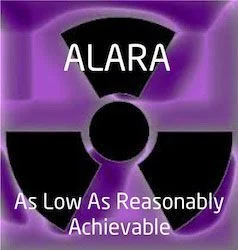The knowns and unknowns of radiation risk were discussed by Annalisa Trianni from Italy at the Management in Radiology session, held during the recent European Congress of Radiology in Vienna, in a talk prepared with Donald Peck from the USA.
Outcome of radiation can be pre-determined to some extent. The amount of energy required to cause these effects is different for different tissues, and this amount of radiation is called the threshold dose for tissue damage. Threshold dose has been derived from studies in experimental cell cultures, animal studies and so on.
The threshold doses for various tissues are more or less known. Only 1% of the population would have these effects. Reviews of biological and clinical studies have shown that below 0.1 Gy no deterministic effects from radiation exposure have been proven.
It is also known that some inherited syndromes result in increased sensitivity to radiation.
Stochastic effects are random or probabilistic in nature - i.e. not predictable. There is no direct evidence at any radiation dose that exposure of parents leads to excess genetic diseases.
Arguably the most important and most feared radiation effect is the induction of cancer. At very high radiation exposure levels there is good data that proves induction of cancer from exposure.
There is no unique feature of radiation induced cancer to distinguish it from naturally occurring cancer.
Effective dose is intended for use for radiation protection. Its main uses are prospective dose assessment for planning and optimisation. However, the effective dose should only be used for radiation protective purposes, not for epidemiological studies. Risk from low dose must be extrapolated from high dose data.
Stochastic effects have not been proven at exposure levels used in most imaging procedures. However, this does not mean stochastic effects do not occur. Deterministic effects will occur if the radiation absorbed dose is high enough.
There are sensitivity differences between different ages and different organs. Just because we can't estimate effects of low dose does not mean that there is no risk.
The AHARA principle should be used alongside ALARA, concluded Trianni. AHARA is as high as reasonably achievable in relation to image quality.
Image credit: google Images
18 March 2014
Latest Articles
ECR, Radiology, Radiation, Radiologists, Dose, ECR 2014, ALARA, AHARA
The knowns and unknowns of radiation risk were discussed by Annalisa Trianni from Italy at the Management in Radiology session, held during the recent Euro...










